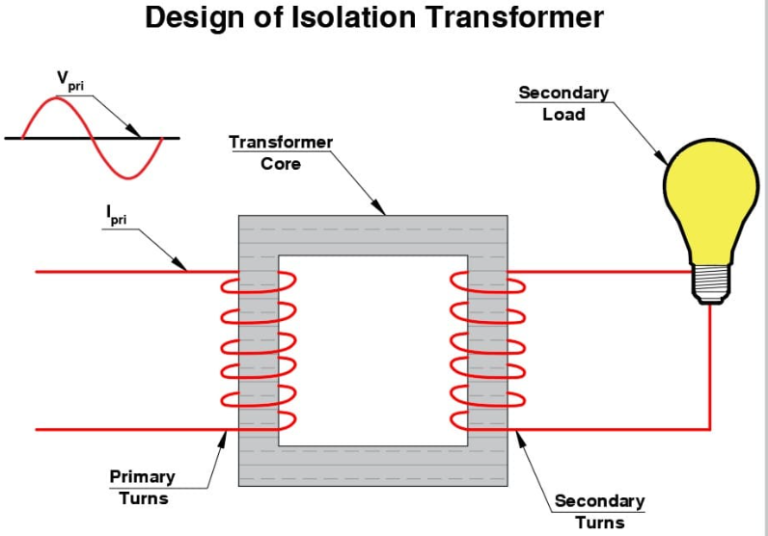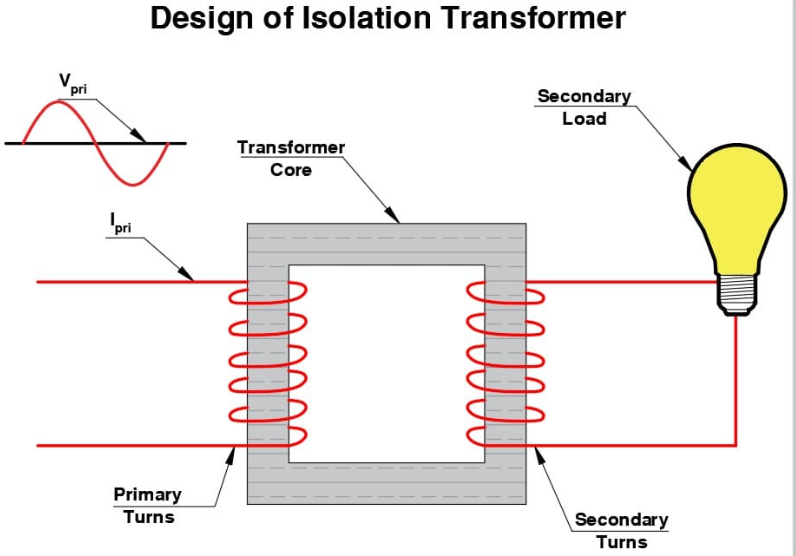
In the realm of electrical engineering and power distribution, ensuring safety, reliability, and efficiency is paramount. Among the various components employed to achieve these goals, isolation transformers stand as a fundamental and crucial device. They play a significant role in mitigating risks, protecting equipment, and enhancing the functionality of electrical systems. This comprehensive article aims to delve into the concept, construction, applications, and significance of isolation transformers in modern-day electrical engineering.
Introduction to Isolation Transformers
An isolation transformer is a device designed to transfer electrical power from a source to a load while isolating the powered device from the power source for safety and functional purposes. It accomplishes this by electrically separating the primary winding from the secondary winding, thereby eliminating direct electrical connection between the two circuits. This isolation prevents the flow of current between the input and output, except for the magnetic coupling between the windings.
Construction of Isolation Transformers
These transformers consist of two separate coils of insulated wire wound around a common iron core. The primary coil receives electrical power from the input source, while the secondary coil delivers power to the output device. The core, typically made of laminated steel, ensures efficient magnetic coupling between the coils while reducing eddy currents and losses.
The ratio of turns between the primary and secondary coils determines the voltage transformation. Isolation transformers can step up or step down the input voltage, depending on the winding arrangement, providing flexibility in adapting to different voltage requirements of devices.
Functionality and Significance
Electrical Isolation for Safety
One of the primary functions of isolation transformers is to ensure electrical safety. They prevent the passage of potentially harmful currents between the input and output circuits, significantly reducing the risk of electric shock to operators and damage to equipment. Industries dealing with sensitive electronic equipment, such as medical facilities, laboratories, and telecommunications, heavily rely on isolation transformers to protect both personnel and machinery.
Noise Reduction and Signal Integrity
Isolation transformers also serve to minimize electrical noise and interference. They help in filtering out electromagnetic interference (EMI) and radio-frequency interference (RFI) that might disrupt the proper functioning of sensitive equipment or communication systems. By providing clean and isolated power, these transformers maintain signal integrity, ensuring accurate data transmission and optimal performance.
Ground Loop Elimination
In complex electrical systems, ground loops—unwanted currents caused by multiple grounding points—can introduce noise, affect signal quality, and potentially damage equipment. Isolation transformers help in breaking ground loops by providing a separate electrical path, mitigating these issues and ensuring system stability.
Applications of Isolation Transformers
Medical Equipment
In the medical field, where precision and safety are critical, isolation transformers are extensively used. Devices like MRI machines, X-ray equipment, and various medical instrumentation require clean and isolated power to function reliably without posing risks to patients or operators.
Industrial Settings
Industries dealing with sensitive electronic equipment, such as manufacturing plants, laboratories, and data centers, employ isolation transformers to protect machinery from power surges, fluctuations, and electrical disturbances. They safeguard against potential damage caused by electrical noise or transient events, ensuring uninterrupted operation of critical systems.
Telecommunications
In the realm of telecommunications, where uninterrupted communication is vital, isolation transformers play a pivotal role in maintaining signal quality and reducing interference. They are utilized in various equipment, including modems, routers, and networking devices, ensuring reliable data transmission.
Audio Equipment
In audio systems, particularly professional and high-fidelity setups, isolation transformers help eliminate ground loops, reduce humming or buzzing noises, and maintain audio signal purity. They are employed in recording studios, live sound setups, and broadcasting facilities to achieve pristine audio quality.
Conclusion
Isolation transformers stand as indispensable components in electrical systems, offering crucial benefits in terms of safety, functionality, and reliability. Their ability to isolate circuits, reduce electrical noise, and protect equipment makes them a vital element in various industries and applications.
As technology advances and the demand for more sophisticated electrical systems grows, the role of isolation transformers becomes even more crucial. With continuous improvements in design and manufacturing, these transformers will continue to play a pivotal role in ensuring the safety and efficiency of electrical systems across diverse fields. Understanding their significance and deploying them effectively will remain a cornerstone in the design and operation of reliable and safe electrical infrastructure.
